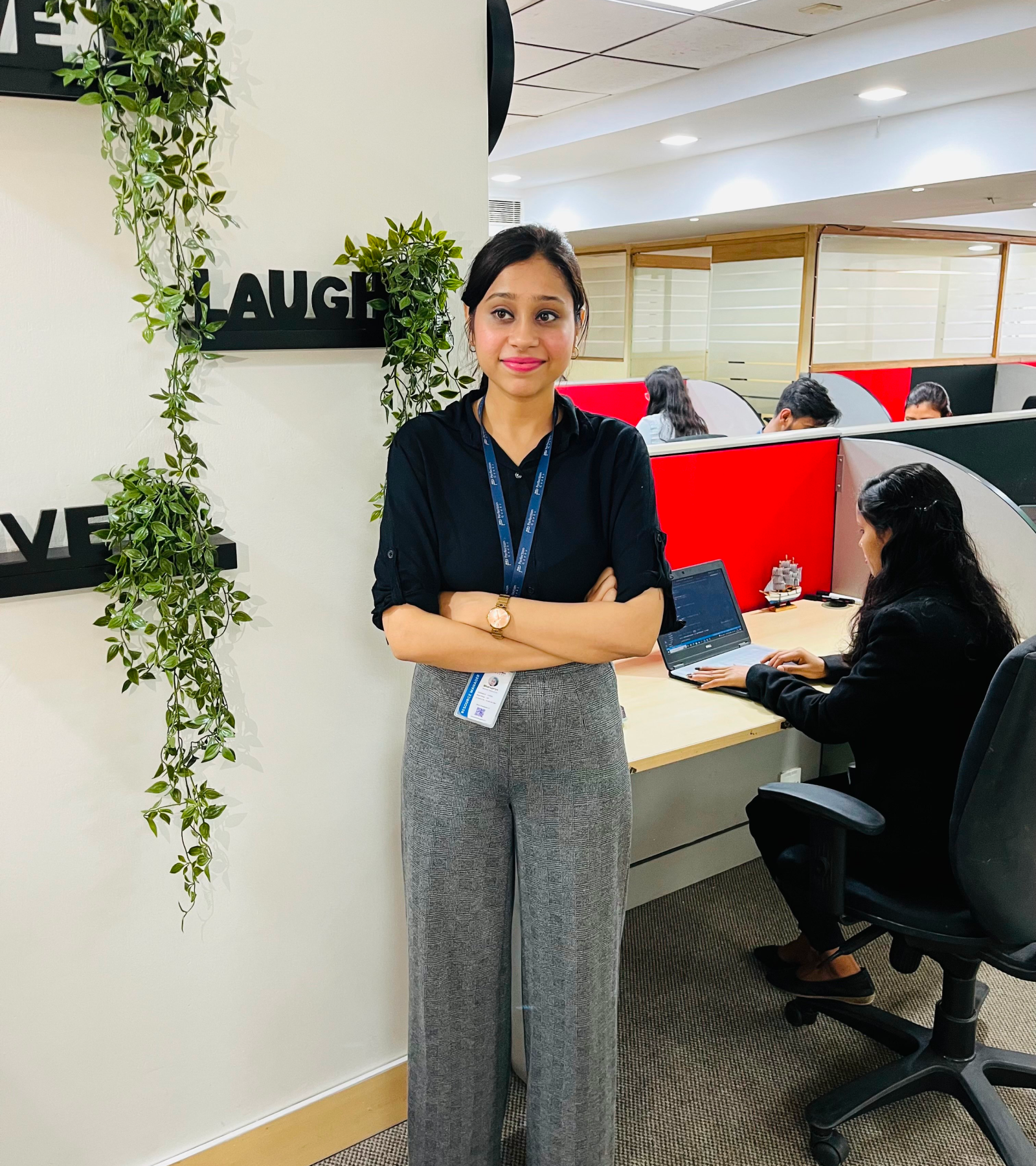Web Design and Development in Ethiopia

JUN, 27, 2024 15:10 PM
Web Design and Development in Ethiopia
In recent years, Ethiopia has been undergoing a profound digital transformation, characterized by increasing internet penetration and a growing awareness among businesses of the importance of establishing a robust online presence. Web design and development play a pivotal role in this transformation, enabling enterprises to showcase their products and services effectively to a global audience. This article explores the landscape of web design and development in Ethiopia, emphasizing its significance, key considerations when selecting service providers, current trends, and the future outlook of the industry.
Importance of Web Design and Development
Web design and development are foundational pillars of any successful digital strategy. In Ethiopia, as in many parts of the world, a well-executed website serves as a virtual storefront that plays a crucial role in shaping consumer perceptions, driving engagement, and ultimately influencing purchasing decisions. Here's a detailed exploration of why web design and development are critical for businesses in Ethiopia:
- Enhancing brand visibility and credibility: In a competitive marketplace, establishing a b online presence is essential for businesses looking to stand out. A professionally designed website not only showcases products and services but also reflects the brand's identity and values. This visual representation fosters trust and credibility among potential customers, reassuring them of the company's legitimacy and commitment to quality.
- Driving Customer Engagement: A website serves as a 24/7 marketing tool, accessible to potential customers across the globe. Through compelling design elements, intuitive navigation, and relevant content, businesses can captivate visitors' attention and encourage interaction. Features such as blogs, newsletters, and social media integrations facilitate ongoing engagement, allowing businesses to build meaningful relationships with their audience over time.
- Facilitating User Experience (UX): User experience is paramount in determining the success of a website. In Ethiopia, where internet usage is rapidly growing but diverse in terms of device preferences and connectivity speeds, optimizing UX is crucial. A well-designed website ensures seamless navigation, fast loading times, and intuitive functionality across desktops, tablets, and smartphones. By prioritizing UX design principles, businesses can enhance visitor satisfaction and encourage repeat visits.
- Supporting Business Growth and Conversions: Beyond aesthetics, the functionality of a website significantly impacts its effectiveness as a business tool. Clear calls-to-action (CTAs), optimized conversion funnels, and intuitive e-commerce capabilities streamline the path from visitor to customer. For businesses in Ethiopia aiming to expand their customer base and drive sales, a well-planned website serves as a powerful asset in converting leads into loyal patrons.
- Adapting to Digital Trends and Consumer Behavior: The digital landscape is constantly evolving, influenced by technological advancements and shifting consumer behaviors. In Ethiopia, where internet penetration is growing rapidly, businesses must adapt to these trends to remain competitive. Responsive design, mobile optimization, and integration with emerging technologies (such as AI-driven personalization or voice search) are becoming increasingly important. By staying abreast of these developments and incorporating them into their web design strategy, businesses can future-proof their online presence and stay ahead of the curve.
- Measuring and Improving Performance: One of the key advantages of digital marketing is the ability to measure and analyze performance metrics in real-time. Through tools like Google Analytics, businesses can track website traffic, user engagement, conversion rates, and other valuable insights. This data-driven approach allows for continuous optimization and refinement of the website, ensuring it remains aligned with business goals and responsive to market dynamics.
Key Considerations for Choosing the Right Web Design and Development Company
Selecting the right web design and development company is a critical decision that can significantly impact the success of your digital initiatives. In Ethiopia's evolving business landscape, where digital transformation is accelerating, businesses must carefully evaluate potential service providers based on several key factors:
1. Expertise and Experience:
Expertise: Look for companies with a demonstrated expertise in web design and
development. Assess their technical proficiency in various programming languages,
frameworks, and platforms relevant to your project needs. Companies with certifications
or partnerships with leading technology providers (like Google, Microsoft, or Adobe)
often demonstrate a commitment to excellence and staying updated with industry
standards.
Experience: Evaluate the company's track record in designing and
developing websites across diverse industries. Experience in handling projects similar
to yours—whether it's e-commerce, corporate websites, or specialized
applications—provides valuable insights into their capabilities and reliability.
Case studies and references from past clients can offer tangible proof of their ability
to deliver quality solutions on time and within budget.
2. Portfolio and Client Testimonials:
Portfolio: Review the company's portfolio to assess the quality and diversity of
their work. Pay attention to design aesthetics, user interface (UI) design,
functionality, and overall user experience (UX). Evaluate if their design style aligns
with your brand's vision and target audience preferences.
Client
Testimonials: Client testimonials and case studies provide firsthand accounts of
the company's professionalism, communication skills, and ability to solve challenges.
Reach out to their references to inquire about their experience working with the
company, including project management, responsiveness to feedback, and adherence to
timelines.
3. Technology and Tools:
Technological
Proficiency: Ensure that the company utilizes modern technologies and frameworks
for web development. This includes proficiency in responsive design principles to ensure
optimal performance across devices, SEO best practices for enhancing search engine
visibility, and integration of advanced functionalities such as e-commerce platforms
(like Shopify or WooCommerce) or content management systems (CMS) like WordPress or
Drupal.
Security Measures: Inquire about their approach to website
security, including data protection measures, SSL certificates, and compliance with
industry standards (such as GDPR or CCPA). A robust security framework is crucial for
safeguarding sensitive customer information and maintaining trust.
4. Communication and Support:
Project
Communication: Effective communication is essential throughout the web
development process. Choose a company that emphasizes clear communication channels,
regular progress updates, and transparency in project management. This ensures that all
stakeholders are aligned on project goals, timelines, and milestones.
Ongoing
Support: Post-launch support and maintenance are critical for the long-term
success of your website. Inquire about the company's support services, including
troubleshooting, software updates, and scalability options as your business grows. A
reliable support system ensures that your website remains secure, updated, and optimized
for performance.
5. Cost-effectiveness:
Value Over
Price: While cost is a consideration, prioritize value over price alone. A
higher initial investment in quality web design and development can yield long-term
benefits in terms of website performance, user engagement, and return on investment
(ROI). Consider the overall value proposition, including the company's ability to
deliver scalable solutions that align with your business objectives and growth strategy.
6. Cultural Sensitivity and Local Market
Understanding:
Local Expertise: In Ethiopia, businesses benefit
from partnering with web development companies that understand local market dynamics,
cultural nuances, and consumer behaviors. Companies with a local presence or extensive
experience in the Ethiopian market are better equipped to tailor solutions that resonate
with the target audience and address specific challenges unique to the region.
Global Best Practices: While local expertise is crucial, companies that also
leverage global best practices and innovative approaches can offer a competitive edge.
Look for partners who strike a balance between local insights and global standards,
ensuring that your website meets international quality benchmarks while catering to
local preferences.
Web Design and Development Trends in Ethiopia
Ethiopia's web design and development sector is undergoing rapid transformation, driven by technological advancements and evolving consumer behaviors. Several key trends are shaping the current landscape, reflecting a shift towards more interactive, user-centric web experiences tailored to meet the demands of Ethiopia's growing digital economy:
- Mobile-first Design:
With a significant portion of internet users accessing websites via mobile devices, there is a pronounced shift towards mobile-first design strategies in Ethiopia. Websites optimized for mobile platforms not only ensure a seamless user experience but also enhance accessibility and usability across a diverse range of devices. Mobile-first design principles prioritize responsive layouts, fast loading times, and intuitive navigation, catering to the preferences of mobile-centric consumers. This approach not only improves user satisfaction but also boosts search engine rankings, as search engines like Google prioritize mobile-friendly websites in their algorithms. - User Experience (UX) Optimization:
UX design focuses on creating intuitive and engaging interactions that enhance user satisfaction and loyalty. In Ethiopia, businesses are increasingly recognizing the importance of UX optimization to differentiate their brands and drive conversions. UX research and design methodologies, such as usability testing, persona development, and user journey mapping, are being employed to identify pain points and optimize website experiences accordingly. By prioritizing user-centric design principles, businesses can improve engagement metrics, reduce bounce rates, and foster long-term customer relationships. - Responsive Web Development:
Responsive web design ensures that websites adapt seamlessly to various screen sizes and devices, including desktops, tablets, and smartphones. In Ethiopia, where internet access varies across regions and devices, responsive web development is crucial for delivering consistent user experiences. By leveraging flexible grids, fluid layouts, and media queries, developers can optimize content presentation and functionality without compromising on performance. This approach not only enhances usability but also supports SEO efforts by providing a unified URL structure and reducing duplicate content issues. - E-commerce Integration:
The rise of e-commerce in Ethiopia has spurred demand for websites capable of facilitating online transactions and digital commerce. Businesses across sectors, from retail to services, are integrating robust e-commerce platforms that offer secure payment gateways, inventory management, and order fulfillment capabilities. E-commerce websites designed with user-friendly interfaces and streamlined checkout processes enhance convenience and trust, encouraging repeat purchases and driving revenue growth. As internet penetration expands and consumer confidence in online shopping grows, the adoption of e-commerce solutions is poised to accelerate further in Ethiopia's digital marketplace. - Content Management Systems (CMS):
CMS platforms empower businesses to manage and update website content efficiently without requiring extensive technical expertise. In Ethiopia, where content localization and timely updates are critical for engaging local audiences, CMS solutions like WordPress, Drupal, and Joomla are gaining popularity. These platforms offer intuitive interfaces, customizable templates, and scalability options, enabling businesses to publish multimedia content, optimize SEO strategies, and maintain brand consistency across digital channels. By centralizing content management processes, organizations can streamline workflows, improve content relevancy, and adapt quickly to evolving market trends.
These trends underscore the industry's shift towards more interactive, user-centric web experiences tailored to meet the demands of Ethiopia's increasingly digital-savvy population.
Challenges and Opportunities

Ethiopia's web design and development industry is poised for growth, driven by technological advancements and increasing digital adoption. However, several challenges must be addressed to fully realize its potential:
- Infrastructure Limitations:
Ethiopia faces significant challenges related to internet infrastructure and connectivity, particularly in rural and remote areas. Limited access to high-speed internet and unreliable connectivity can hinder the delivery of seamless web experiences. Businesses operating in these regions may struggle to provide consistent access to their websites, impacting user experience and customer engagement. Addressing infrastructure limitations through investments in broadband expansion and network infrastructure upgrades is essential to bridge the digital divide and unlock new growth opportunities across the country. - Skills Gap:
There is a noticeable shortage of skilled web developers and designers in Ethiopia with expertise in the latest technologies and best practices. The rapid pace of technological innovation requires continuous upskilling and professional development among the workforce. Bridging the skills gap through targeted education and training programs, both within academic institutions and through industry partnerships, is crucial for nurturing a talent pipeline capable of driving industry growth and innovation. By investing in skills development, Ethiopia can empower its workforce to meet the evolving demands of the digital economy and compete on a global scale. - Regulatory Frameworks:
Adherence to regulatory requirements poses another challenge for web design and development firms operating in Ethiopia. Compliance with data privacy laws, online payment regulations, and other legal frameworks can impact how websites are designed, operated, and secured. Navigating these regulatory complexities requires a thorough understanding of local laws and international standards, as well as proactive measures to ensure legal compliance and protect consumer rights. By adopting robust data protection practices and maintaining transparency in digital transactions, businesses can build trust with customers and mitigate regulatory risks.
Despite these challenges, Ethiopia's web design and development sector presents significant opportunities for innovation and entrepreneurship:
- Emerging Market Potential:
Ethiopia's growing digital economy and expanding internet penetration offer ample opportunities for businesses to capitalize on emerging market trends. Local startups and established companies are leveraging technological advancements, such as mobile-first design, e-commerce integration, and cloud-based solutions, to develop innovative web solutions tailored to local preferences and consumer behavior. By identifying niche markets and addressing unmet consumer needs, entrepreneurs can carve out competitive advantages and establish market leadership positions in Ethiopia's dynamic digital landscape. - Tech Entrepreneurship and Innovation:
The rise of tech entrepreneurship in Ethiopia is fostering a culture of innovation and creativity within the web design and development sector. Entrepreneurs are harnessing local talent and resources to develop scalable solutions that address specific challenges faced by businesses and consumers. Incubators, accelerators, and startup hubs are providing support networks and mentorship opportunities to aspiring entrepreneurs, facilitating the growth of a vibrant tech ecosystem. By promoting collaboration and knowledge-sharing, Ethiopia can nurture a thriving entrepreneurial ecosystem that drives economic growth and social development. - Global Market Access:
Ethiopia's strategic location, coupled with its growing digital infrastructure, positions it as a gateway to regional and international markets. Businesses that invest in high-quality web design and development services can expand their reach beyond domestic borders, tapping into global opportunities for growth and partnership. By adopting international best practices and standards, Ethiopian firms can enhance their competitiveness and attract foreign investment, further accelerating the country's digital transformation journey.
Conclusion
In conclusion, web design and development play a pivotal role in Ethiopia's digital transformation journey, enabling businesses to establish a competitive edge in both local and global markets. By investing in a professionally designed website and selecting the right web development partner, organizations can enhance brand visibility, engage with their target audience effectively, and drive business growth. As Ethiopia continues to embrace digital technologies, the demand for skilled web designers and developers who can deliver innovative solutions tailored to local needs is expected to grow.
As businesses navigate the evolving landscape of web design and development in Ethiopia, prioritizing user experience, embracing technological advancements, and adhering to best practices will be key to achieving sustainable digital success. By staying abreast of industry trends and leveraging the expertise of experienced service providers, businesses can capitalize on the opportunities presented by Ethiopia's burgeoning digital economy.
Strategy
Design
Blockchain Solution
Development
Launching
Testing
Maintenance
Contact US!
India

Plot 378-379, Udyog Vihar Phase 4 Rd, near nokia building, Electronic City, Phase IV, Sector 19, Gurugram, Haryana 122015
Copyright © 2025 PerfectionGeeks Technologies | All Rights Reserved | Policy
Strategy
Design
Blockchain Solution
Development
Contact US!
India 
Plot 378-379, Udyog Vihar Phase 4 Rd, near nokia building, Electronic City, Phase IV, Sector 19, Gurugram, Haryana 122015
USA 
1968 S. Coast Hwy, Laguna Beach, CA 92651, United States
Copyright © 2025 PerfectionGeeks Technologies | All Rights Reserved | Policy






